
Design Wall in Action, No Pins Necessary
Hey Everyone, welcome back to Technique Tuesday on Thursday. Last week I talked about making a portable design wall and this week’s topic is how to make a larger design wall that is still lightweight but not quite as portable and still very economical.
When we lived in Australia I bugged Michael for a design wall for a very long time as I was tired of using a sheet pegged to the curtain rod as my design wall. The design wall did get made but it was very heavy and difficult to move if I needed to get it out of the living room . Upon returning to Canada we thought about how we could make the design better – light weight, inexpensive and easier to move around if needed. Michael came up with the idea of using PVC piping as the frame which is lightweight and not too pricey. Also available at any hardware store.
Requirements for 7 x 5 ft wall:
- ABS pipe – 2 ea 12 ft long, 1 ½″ diameter piping – cut each piece into a 7 ft and 5 ft piece (you can ask the guys at the hardware store to do this for you as it will make it much easier to fit the pipe in your car. Michael took a cordless reciprocating saw with him)

ABS Pipe at Home Depot
- ABS pipe 90 degree elbows – 1 ½″ diameter- 4 in total
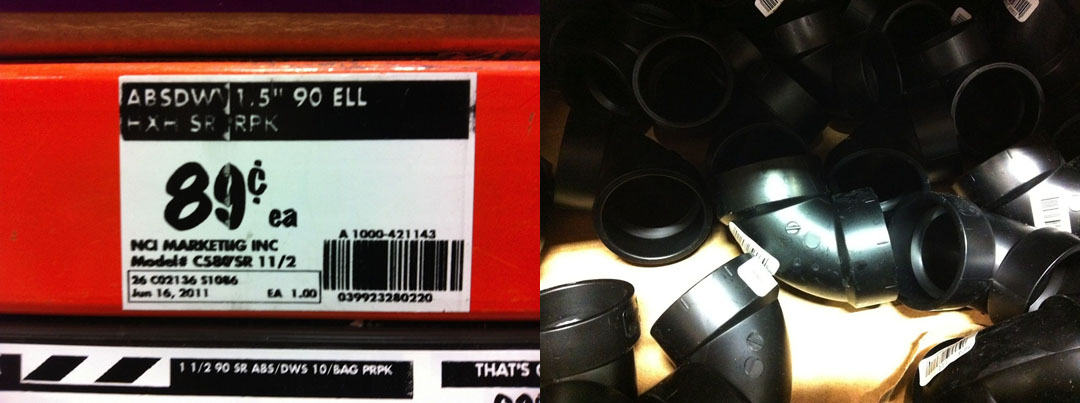
90° ABS Elbows at Home Depot
- PVC cement – 1 small can
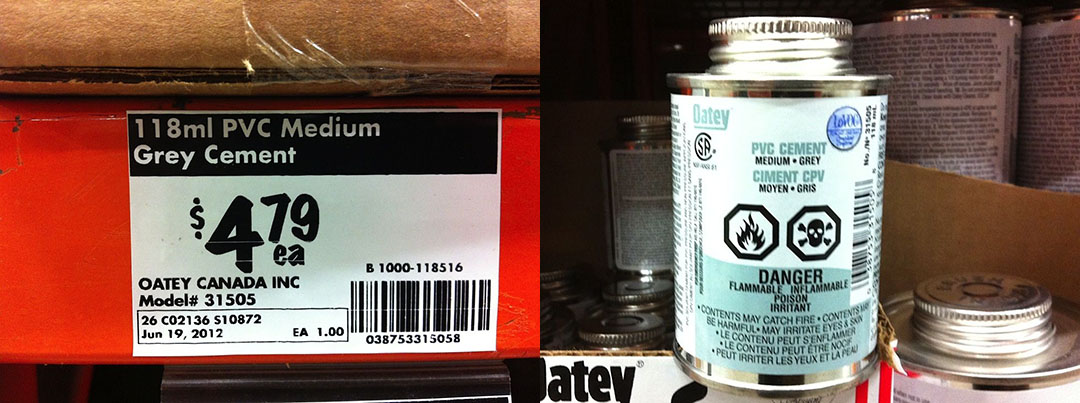
PVC Cement at Home Depot
- One king size flannel sheet in a neutral colour such as beige or grey for front of design wall
- Peltex – fusible on both sides is recommended – 6 metres
- Piece of flannel – 4 metres – does not matter what it looks like as it is on the back
- Velcro – 2 inch wide – 4 metres – make sure you get sew-on Velcro on as the stick-on doesn’t hold and will gum up your sewing machine if you try to sewn it on.
Making The Frame
To create the frame 4 pieces of ABS pipe are needed – 2 vertical sides and 2 horizontal sides. My design wall is 86 x 64 inches so just a little over 7 ft x 5 ft because of the elbows holding the piping together.
When you cement the pipe and elbows together, you will want to work in a large, well ventilated space like a garage. If you have to work inside your home, make sure to have the windows open and work on a cement surface or put down painting drop cloths. You don’t want to drip any of the PVC cement on your carpet or you will have a mess.
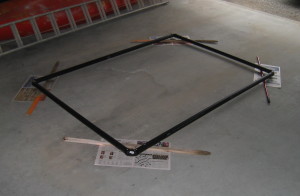
Frame Laid Out on Garage Floor
Lay out the pipe on the floor of your working space to form a 7×5 rectangle with a 90° elbow at each corner. Put a piece of newspaper under each corner to catch any drips that fall. I also recommend getting some scrap pieces of wood to prop all the corners on so that the newspaper doesn’t get glued to the pipe. It’s not the end of the world if you end up with some newspaper stuck to the frame, but it doesn’t come off easily, so will look a bit messy.
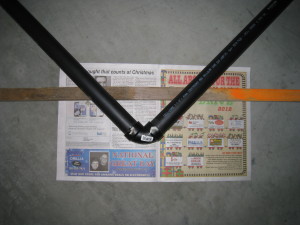
Frame Supported Over Newspaper
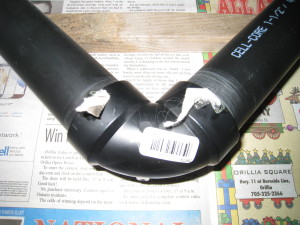
Bits of Newspaper Stuck To My Frame – No Big Deal
Once you have all your parts laid out, you are ready to glue it all together. For this next step, you do have to work quickly and accurately as the cement sets very quickly. It helps to have a second set of hands for this stage to help hold pieces and make sure that all the joints are square and lay flat.
The PVC cement has a little applicator brush attached under the lid, so just open up the can, dab off some of the excess (you don’t need very much cement) and then wipe the applicator around the outside of the end of one of the pipes to coat the first ½″ of the pipe. Press a 90° elbow onto the end. Now take the pipe that will fit into the other side of this same 90° elbow and glue it into the elbow. Now continue to work your way around the frame until everything is glued in place.
Be careful while you are doing this that you make sure all the elbows are turned in the same plane – that is, make sure that all the pipes end up parallel to the floor you are working on so that your design wall won’t be warped when you are finished.
The cement will set very quickly so you should be able to move it in less than an hour. Check it gently first, you’ll be able to tell! If you did end up with a bit of newspaper stuck to the frame, some sandpaper will help get it off, or you can just ignore it.
Once Michael and his Dad had the PVC pipe glued together for me then it was my turn.
Making The Wrapper (or the Wall Part)
Now you need to make the wrapper.
For this, I used a king size flannel sheet, some inexpensive flannel for the back and double-sided, fusible Peltex sandwiched between the front and back. I do recommend using the fusible Peltex as pinning the layers together is a bit tough and hard on the fingers seeing how the Peltex is quite stiff. Using a flannel sheet on front means most pieces of fabric and blocks that you make will stick to the design wall on their own without using pins to secure them to the wall.
The Peltex provides some stiffness to the wrapper so that when you pull it tight on the frame, the wrapper doesn’t stretch out of shape. Originally I had just put the flannel sheet on with velcro but it had no tautness so it kept drooping which made it difficult to put any quilt blocks on it.
Cut notches out of each corner of the king size sheet to create cut-outs for the corners of the frame so the wrapper wraps around it neatly. The notches I cut out of the corners were 11″ x 18″.

Cut a rectangle out of each corner.
I recommend either pinking the edges of the flannel sheet where the piece has been cut out or zigzag the edges so they do not fray and unravel.
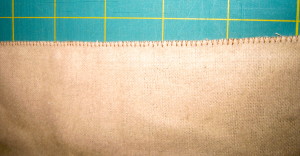
Zigzag edges to prevent fraying
Next cut your Peltex so that you have enough length and width for the internal dimensions of the frame. I.E., you don’t want to have the Peltex wrapping around the frame. I used 3 strips of Peltex in the centre of mine. Centre the Peltex on the front sheet and iron it on as per manufacturers directions. A second pair of hands is helpful with this as it is much larger than the ironing board and will drape over to the floor.
Now you can layout the back side flannel to cover the Peltex. It’s okay if the back side sheet is larger than the frame dimensions and wraps around the frame, but I still made it smaller than the front sheet. As well I pinked all the edges of the backing flannel so they would not fray. At the corners a smaller rectangle will need to be cut out to match the front. Iron the backing fabric to the Peltex to activate the fusible glue.
At this stage, I recommend you quilt the wrapper to hold everything in place. I just ran long, straight stitches every 2 or 3 inches down the long dimension of the wrapper.
Next up, it’s time to put the velcro on. Lay the wrapper on the floor, back side up, and put the frame in place on top. Wrapping the wrapper around the frame, mark out Velcro locations every 12″ along just one side. Layout the positions for the velcro so that you have long strips perpendicular to the frame on the inside of the frame and tabs along the edge of the fabric. (A picture is worth a thousand words here, I think!)
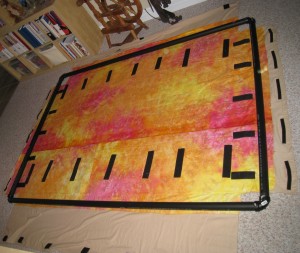
Back side of the wrapper with all the Velcro in place
Each of the long strips is about 8″ long. Using long strips here let’s you adjust the tension of the design wall and tighten it up if it stretches over time.
Sew on all the Velcro for one side and then lay everything out on the floor again. Now wrap the wrapper around the one side and use the Velcro to hold it in place. Now mark out the Velcro locations for the opposite side of the frame. This time, pull the wrapper tight so that you get the Velcro in the right place to result in a nice tight design wall wrapper.
Sew the Velcro for this side in place. Repeat these steps now for the remaining two sides of the wrapper.
Now you can put it all together and start designing!
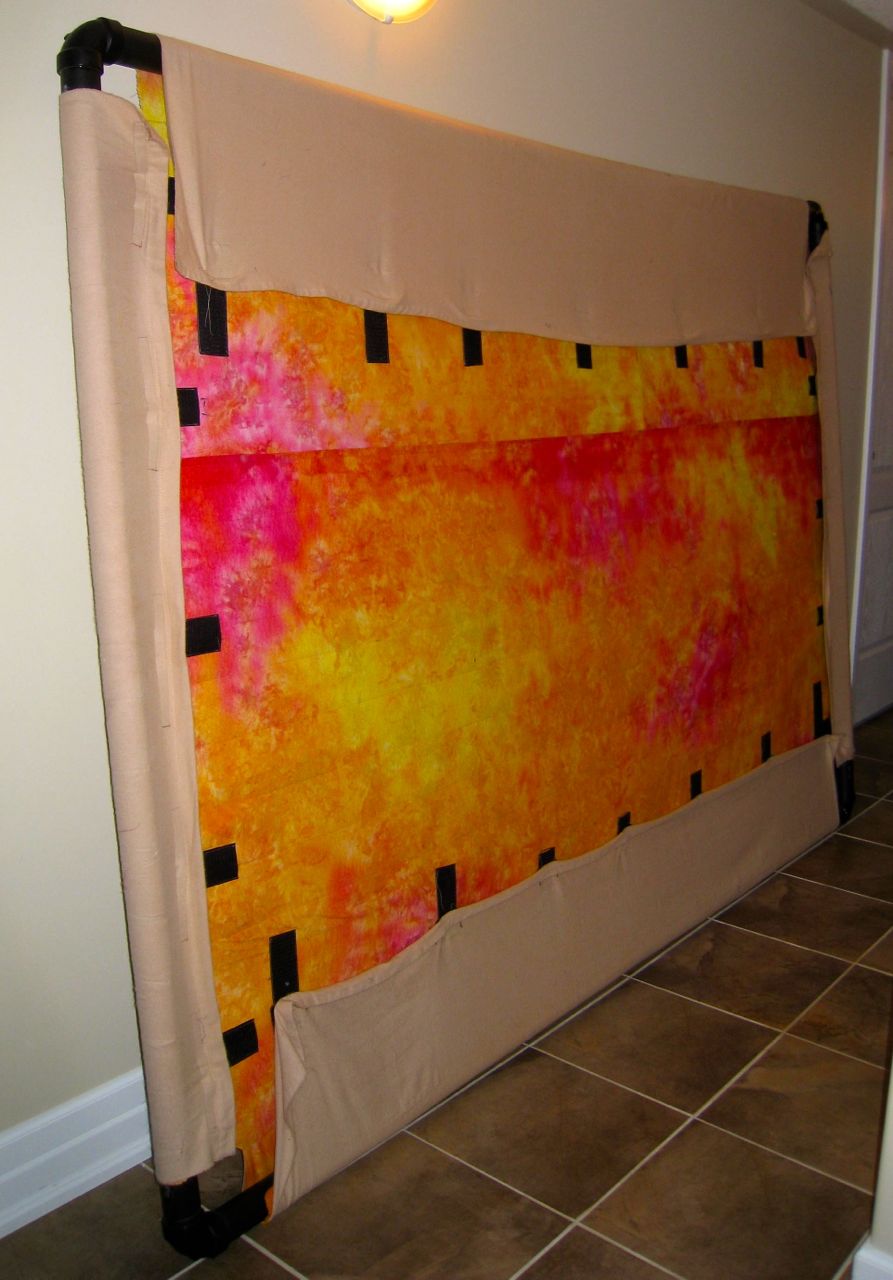
Happy Quilting!


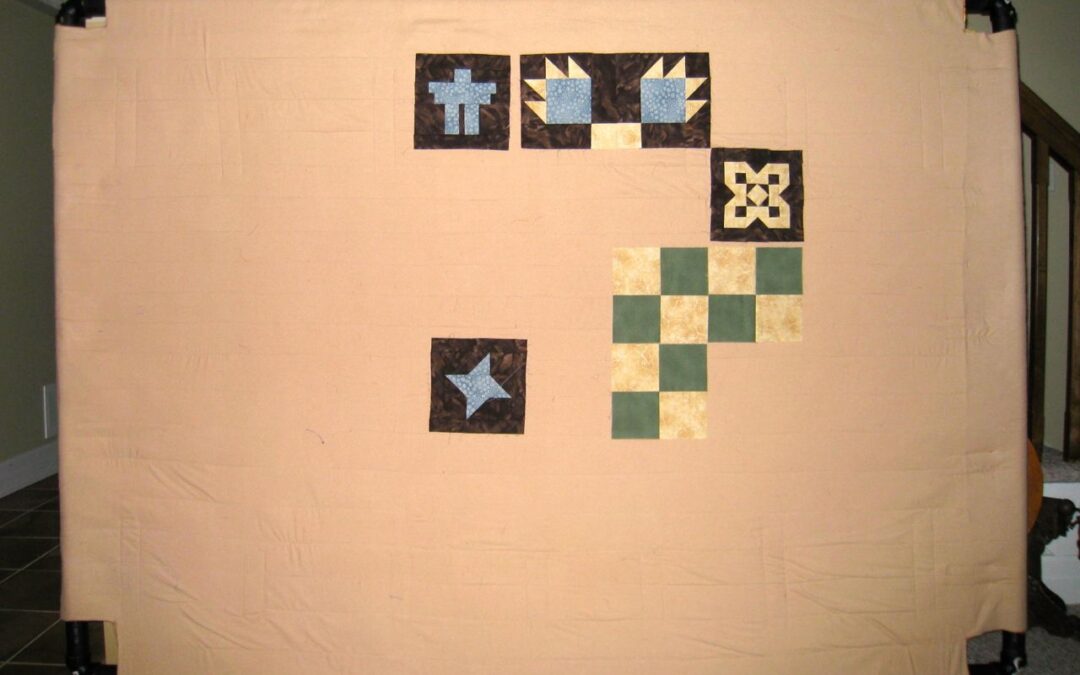
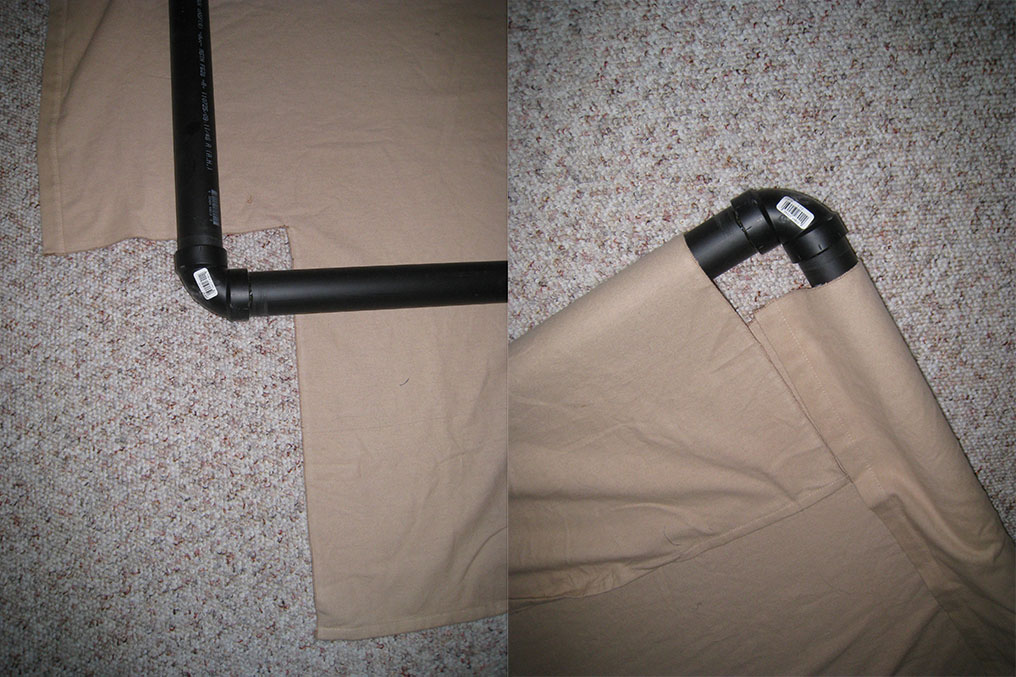
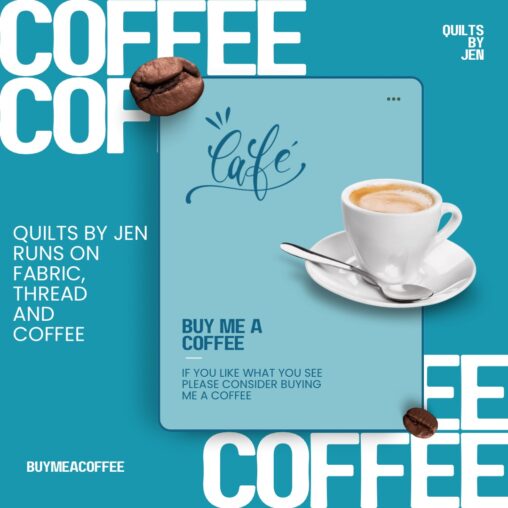


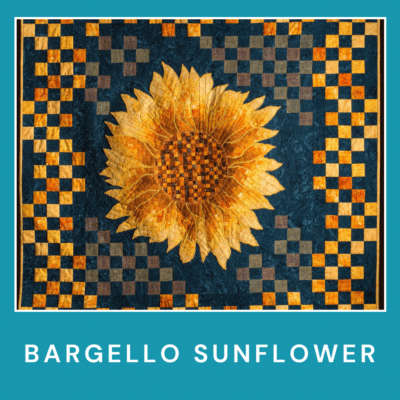

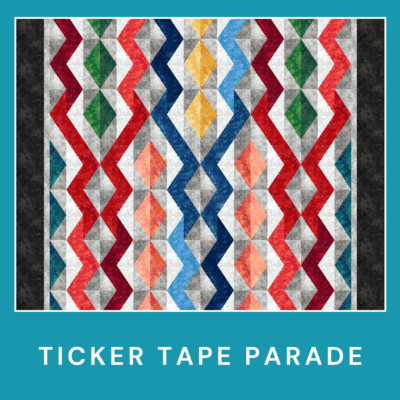
Thank you for sharing this. I’m going to give it a try 🙂
You are very welcome Janine. I love mine.